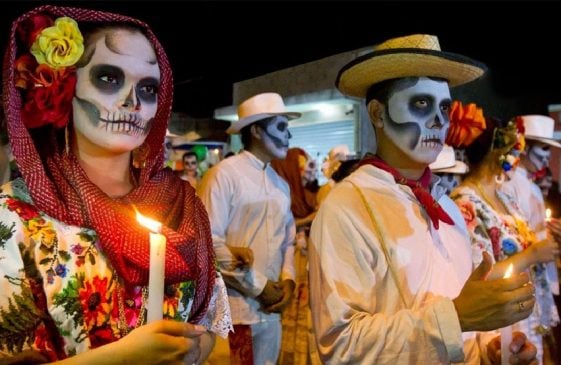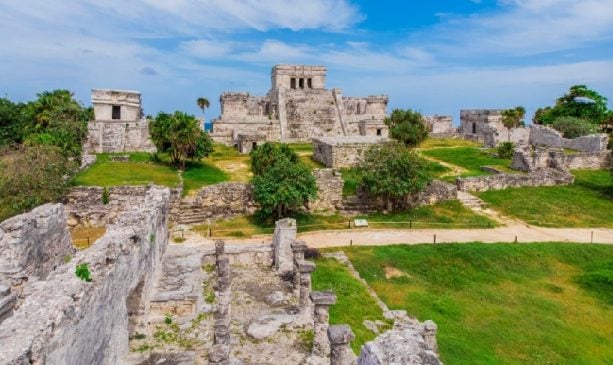Riviera Maya, Q.R. — Mexico has begun its annual Dia de Muertos celebrations of the living presence of the dead. Municipalities across Quintana Roo will host their own version of Dia de Muertos which for many, begins on the night of October 31.
Thousands will crowd cemetaries on November 1 and 2 to spend the evening with their deceased loved ones, decorating graves with food, candles and marigold flowers. Those who do not have gravesites will dedicate a home altar to remember the dead.
According to the Instituto Nacional para el Federalismo y el Desarrollo Municipal, in pre-Hispanic times, death was one of the basic elements of the culture. When someone died, they were buried wrapped in a mat and their relatives organized a party to guide them on their journey to Mictlán (the Aztec underworld).
They also offered food that they liked in life in the belief that they might become hungry. In the indigenous view, the Day of the Dead implies the temporary return of the souls of the deceased who return home to the world of the living to be with their relatives and to nourish themselves with the essence of the food offered to them on the altars placed in their honor.
During the Day of the Dead celebration, death does not represent an absence but a living presence. Death is a symbol of life that materializes in the altar offered.
Every year, families place offerings and altars decorated with marigold flowers, confetti, sugar skulls, bread of the dead (pan de muerto), mole or some dish that their relatives liked to whom the offering is dedicated. Also, like in pre-Hispanic times, incense is placed to aromatize the area.
The festivities also include decorating graves with flowers and often making altars on the tombstones, which in indigenous times, had great significance because it was thought to help guide the souls to a good path after death.
Tradition also indicates that, to facilitate the return of souls to earth, petals of cempasúchil flowers (marigold) must be scattered and candles placed along the path they will take so that the souls do not get lost on the way to their destination.
In ancient times, this path led from the family home to the pantheon where their loved ones rest.
The celebration of the Day of the Dead takes place on November 1 and 2 since it is divided into categories. November 1 corresponds to All Saints’ Day, a day dedicated to the “little dead” or children, and November 2 to adults or the Faithful Departed.
During celebrations, it is also customary to dress like Catrina, a caricature called La Calavera Garbancera, named in allusion to the peasants of that time who were of indigenous blood and dressed elegantly, pretending to resemble the European lifestyle.
La Calvera Garbancera was created more than 120 years ago by Mexican artist José Guadalupe Posada. Her caricature was drawn by Posada, who was critical of the inequality and social injustice in the Porfirian society of that time. In this way he portrayed the beliefs and ways of daily life of the popular groups, criticizing the abuse of the government with a sense of humor and great drama.


